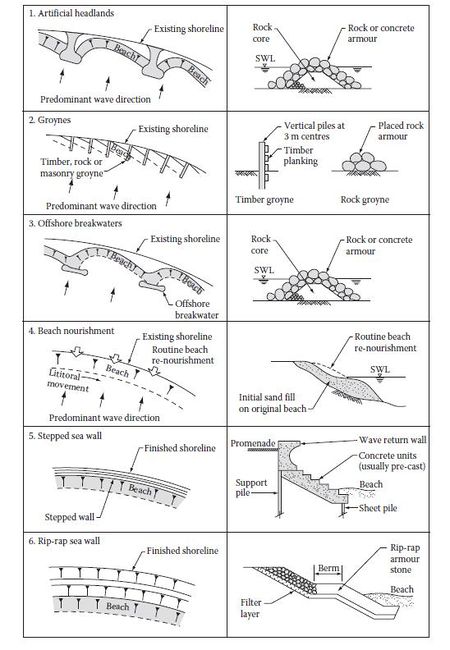7 Simple Techniques For Shore Protect Team
Table of ContentsWhat Does Shore Protect Team Mean?The Ultimate Guide To Shore Protect TeamNot known Factual Statements About Shore Protect Team Shore Protect Team Can Be Fun For EveryoneThe 3-Minute Rule for Shore Protect TeamExcitement About Shore Protect TeamThe smart Trick of Shore Protect Team That Nobody is Talking About
Decrease in residential property worth: As the area tourist is affected by erosion, so then is the economy. Buyers are less likely to look for a coastline house that might be ruined anytime by the impending flooding and erosion emergency situation. Consequently, residential or commercial property worth can go down profoundly and influence the entire region.Whether a beach is just tiny and congested or has to close completely for the safety and security of the community and neighboring properties, this significantly impacts tourist. Consequently, local economies are affected (https://alivelinks.org/Shore-Protect-Team_507729.html). Risk of injury: The increased threat of flooding and architectural failures creates a raised danger of injury to close-by tourists and area participants

is home to more than 84,240 miles of shoreline with 41% of it exposed to the open ocean. Coastal engineers supervise of safeguarding the coast against adjustments by decreasing the harmful effects of both natural and manufactured events. Coastline stablizing is directly associated to their job. Beachfront hotels: Because coastline disintegration impacts tourism, it impacts the success of beachfront hotels.
Shore Protect Team for Dummies
Coastal commercial businesses: No travelers means no service. Coastal state parks: State parks that exist along shorelines are at risk of damage.
Soft stablizing is a far better remedy for the setting and more lasting overall. Difficult stablizing makes use of manufactured structures as defense to regulate disintegration. Usually, these structures are set up at appropriate angles or parallel to stop sand movement and lessen the pressure of waves. Most forms of difficult stabilization like seawalls and sheet metal are not suitable for shoreline stabilization.
6 Simple Techniques For Shore Protect Team
There's likewise inadequate evidence of their efficiency depending on the sort of coastline and regional conditions. Hard stablizing strategies often tend to be extra tough to mount and do not match the natural aesthetic, standing out like a sore thumb and damaging regional ecological communities in many situations. Coastline sustenance is the process of including lost sand and sediment back to beaches after erosion has happened.
TrapBags help in the procedure of coastline nourishment by securing natural communities and enabling plants to grow. While this process can be costly and is not long-term, the pros often tend to exceed the disadvantages. TrapBag barriers deal many residential or commercial properties that make them suitable for coastal and riverbank erosion security. They're: Ecologically friendly: You can make use of native soil both to border and to fill up the TrapBags.

The Ultimate Guide To Shore Protect Team
Easy to set up: Ease of installment implies TrapBags can be released promptly in case of an emergency situation. They can additionally be set up without any kind of heavy equipment. Inexpensive: TrapBags are ideal for both small and large locations of coastline. They supply an affordable solution to cover tasks of any size.
The suitable seawall style relies upon location-specific elements, including surrounding erosion processes. There are 3 primary sorts of seawalls: upright, bent, tipped, and mounds (see table below). A report published by the United Nations Atmosphere Program (UNEP) suggests that the tsunami of 26 December 2004 triggered much less damages in the areas where natural barriers were existing, such as mangroves, reef or seaside greenery.
All-natural obstacles, such as reef and mangrove forests, stop the spread of tidal waves and the flow of seaside waters and reduced the flood and surge of water. A cost-benefit method is an efficient means to figure out whether a seawall is ideal and whether the benefits are worth the cost.
The Buzz on Shore Protect Team
A seawall is a static feature which can clash with the dynamic nature of the coastline and impede the exchange of debris between land and sea. Benefits and disadvantages of seawalls according to Short (1999) Benefits Disadvantages Lengthy term remedy in comparison to soft coastline nourishment (https://www.bitsdujour.com/profiles/se5z6E).

This can cause beaches to dissipate, rendering them worthless for coastline goers. Normally, seawalls can be an effective means to regulate coastal erosion, but only if they are built well and out of products that can hold up against the force of continuous wave power. Some understanding is required of the seaside procedures and morphodynamics specific to the seawall location.
The Facts About Shore Protect Team Revealed
The ideal seawall design depends on location-specific facets, including surrounding disintegration processes. There are 3 major kinds of seawalls: upright, rounded, stepped, and mounds (see table below). A report published by the United Nations Atmosphere Programme (UNEP) suggests that the tidal wave of 26 December 2004 triggered much less damages in the areas where natural obstacles were present, such as mangroves, reef or coastal vegetation.
Natural barriers, such as coral reefs and mangrove woodlands, protect against the spread of tsunamis and the circulation of seaside waters and mitigated the flooding and surge of water. A cost-benefit strategy is an effective method to establish whether a seawall is appropriate and whether the advantages are worth the expense.
Top Guidelines Of Shore Protect Team
A seawall is a static attribute which can contrast with the vibrant nature of the coastline and impede the exchange of debris in between land and sea. Benefits and negative aspects of seawalls according to Short (1999) Benefits Downsides Long term option in contrast to soft beach nourishment.

This can trigger coastlines to dissipate, providing them pointless for beach goers. Usually, seawalls can be an effective means to manage seaside erosion, but only if they are built well and out of products that can hold up against the pressure of recurring wave power.